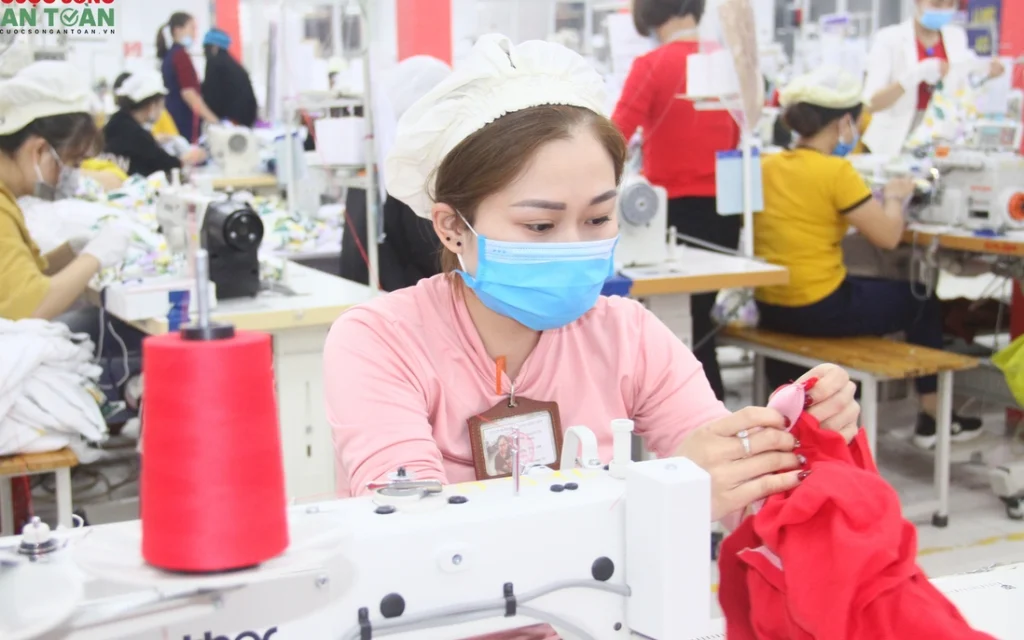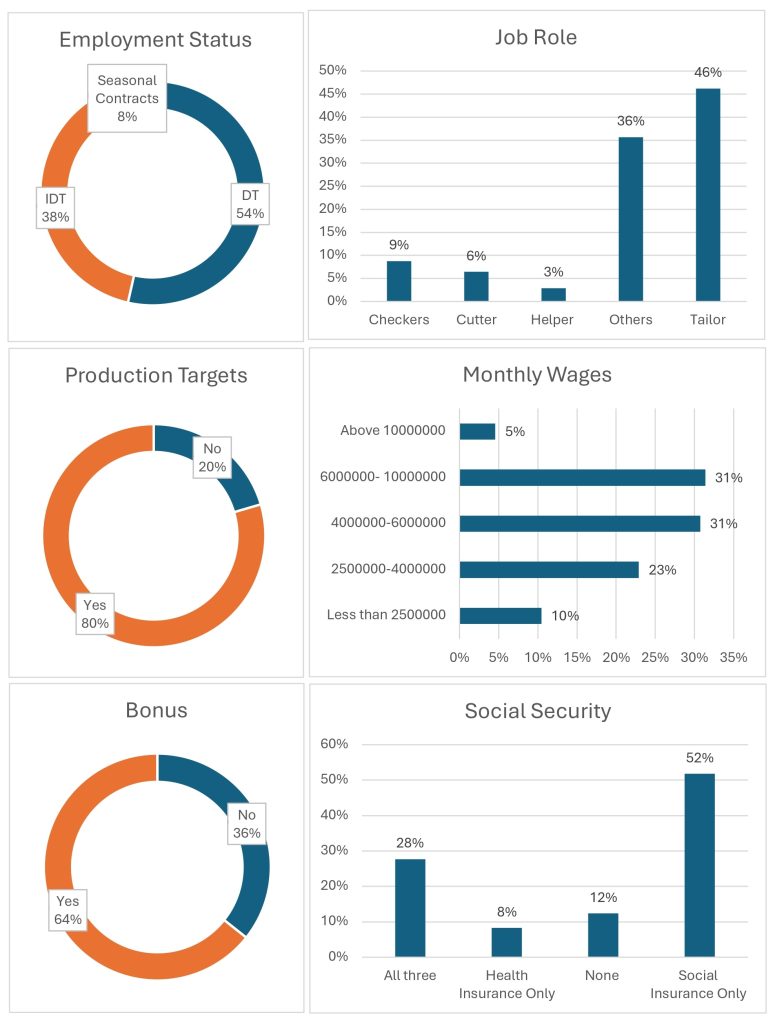Female garment workers are getting younger and younger, over 50% are under 35 years old
Author: H.Hòa
This article has been translated from its original source in Phunu Vietnam: Nữ công nhân ngành may mặc ngày càng trẻ hóa, trên 50% là người ít hơn 35 tuổi

90% of Vietnam’s garment industry workers are female. More than 50% are under 35 years old. Giving priority to recruiting young people, labour is treated like a “disposable commodity”—these are the observations of a “wage survey” conducted by the Asia Floor Wage Alliance (AFWA) in 2024
The Asia Floor Wage Alliance (AFWA) is an international social and labour union
that promotes living wages, gender equality and the prevention of sexual assault
in the workplace for garment workers.
Asia Floor Wage Alliance (AFWA) has just released the results of their Household Consumption Survey conducted among garment workers in Vietnam from 2023 to 2024. According to the report, the garment industry has emerged as an important industry contributing significantly to the country’s economy. With a workforce of more than 2.5 million people, it is one of the largest employment-producing industries in Vietnam.
The survey was conducted from December 2023 to February 2024 with a group of garment workers working at garment factories with products for export, mostly in big cities such as Hanoi and Ho Chi Minh City. Here are the key results:
Gendered Workforce: It is observed that more than four-fifths (90%) of the respondents are women, which is expected in accordance with gender distribution in the industry.
Workers as Disposable Bodies: It is interesting to note that more than half (55%) of the workers are under 35 years old, and only 13% are over 45. This supports a claim by AFWA that the industry treats workers’ bodies like throwaway items and only employs young people who can work faster to meet targets.
Low Human Capital Industry: One-third of the workers surveyed have education only up to elementary school, and 37% finished high school. Only 20% of workers have an education beyond a high school diploma. This is primarily because of the sector’s nature and the jobs’ low-skill requirements. This significantly affects worker pay and the potential for advancement in the industry and job positions.
Low Household Incomes: Half of the workers reported having a household income of less than 10 million VND, and nearly one-third (29%) reported a household income of 5-10 million VND (usually from households with two working people). The median wage of a reported household is 250,000 VND/per day with one working person. A household income of 11 million VND/month is very close to the country’s minimum wages, including overtime, allowances, and other benefits.
Social Security: Notably, more than half (52%) of the workers have only social insurance (this may be because many workers are unaware of the available types of insurance). Workers are paid social insurance due to the law, and the company must comply when establishing and operating the factory. Only 28% of workers report having all three legally mandated insurances (social, health, and unemployment), and only 12% of respondents don’t have any insurance.

Bonuses: 64% of workers reported being paid a bonus as part of their work (holidays, Tet, performance). This bonus was mainly given as a festival allowance or yearly, depending on the worker’s production targets. Hence, these bonuses are linked to either festival allowances or performance-based incentives, not really sharing the firm’s profits.
Low Wages: About one-third (33%) of workers surveyed said they earn less than 4 million VND/month. The median wage of workers is 6 million VND/month. This wage usually includes allowances, overtime, and performance benefits. This points out that the basic wages paid are much less than 6 million VND, which becomes a cause of concern when we understand that the legally mandated national minimum wage in Vietnam is low. For example, the minimum wage in Region 1 is 4,960,000 VND.
Through AFWA’s survey, in addition to the base wage, workers receive around 3,000,000 VND per worker per month. This shows that the basic monthly wage received by workers is, at best, on par with minimum wage and, in many cases, is mostly below them.
Household Consumption Surveys are conducted annually in Asia to find out
garment workers’ actual income and expenses, proposing a common living wage
in each country. In 2023-2024, the survey will be conducted in 8 countries,
including Bangladesh, India, Indonesia, Myanmar, Philippines, Sri Lanka, and Vietnam,
with the participation of 2,666 workers in 185 different factories.
